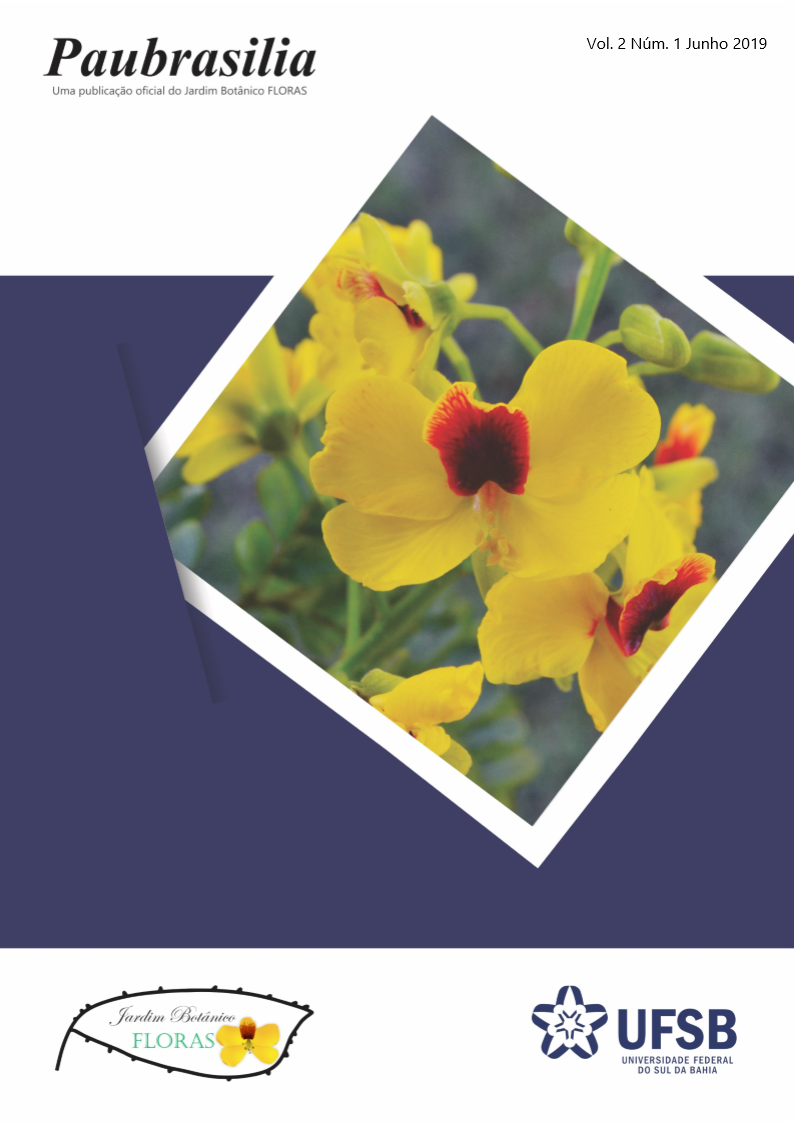Floral biology, reproductive phenology and pollination of Xylopia aromatica (Lam.) Mart. (Annonaceae) in a Cerrado area in Western Bahia state
DOI:
https://doi.org/10.33447/paubrasilia.v2i1.17Keywords:
protogyny, beetle pollination, reproductive systemAbstract
Annonaceae is a common plant family in the Cerrado of Western Bahia state. However, studies on its floral, reproductive and phenological biology, as well as data on its pollinators, are rare in this region. A common species in this area is Xylopia aromatica (Lam.) Mart., whose reproductive aspects are poorly known. This motivated the present work, aimed to study the floral and reproductive biology, phenology and pollinators of this species. The study was carried out in a Cerrado area in the municipality of Barreiras, Bahia State, in the period from October 2015 to September 2017. It included analyses of reproductive phenology, floral biology observations, reproductive system crossings and observations of floral visitors. The flowers of X. aromatica are dichogamous, protogynic. The flowering is synchronous and continuous, allowing the genic flow between the individuals of the species. Among the floral visitors, a Curculionidae was the only one found inside the floral chamber. The protogyny of X. aromatica prevents self-pollination, evidencing the dependence of pollinators to its reproductive success. The highest fruit formation by cross-pollination, coupled with the low geitonogamy rate, suggests a self-incompatible reproductive system for this species.
Downloads
Published
How to Cite
Conference Proceedings Volume
Section
License
By submitting manuscripts for publication in the journal, authors expressly agree to the following terms:
1 - Authors retain copyright on their manuscript and grant the right of first publication to the journal, with the work simultaneously licensed under the Creative Commons Attribution 4.0 International License, allowing it to be shared, as long as authorship and initial publication in Paubrasilia are acknowledged, with proper indication of volume, number (if any), page number (or elocation-id), and year in which the paper was published;
2 - Authors are allowed to enter into additional contracts separately, for non-exclusive distribution of the version of the paper published in Paubrasilia (e.g., publishing in an institutional repository or as a book chapter), provided that authorship and initial publication in this journal are acknowledged, with proper indication of volume, number (if any), page number (or elocation-id), and year in which the paper was published.











